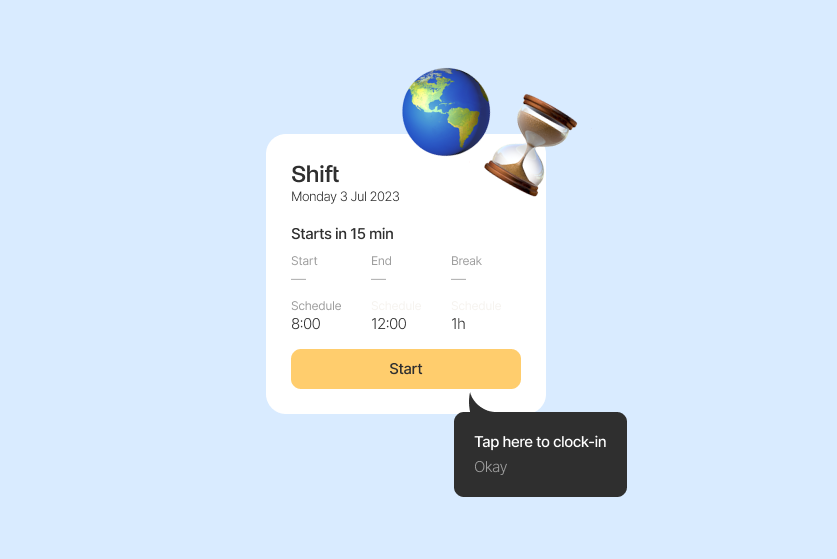How many working days are in one year?
How many working days are there in any given year? Understanding the number of working days in the year is a fundamental aspect of professional life; necessary for calculating salaries, planning projects, and much more. Any employee or employer needs to have a grasp on working days as an integral component of operations, HR, and work life balance – working out when to schedule that dream holiday!

This blog post will answer that question, and dig into the specifics of working days in the UK. Read more for a detailed picture of annual working days and complications that surround them, for both employees and their workers, providing valuable insights for optimal work-life integration.
Deciphering the UK working day
Understanding the number of working days in a year plays a pivotal role in the business landscape. For companies, it’s a cornerstone for efficiently planning tasks, allocating resources, and evaluating productivity. For employees, this knowledge is a window into their work commitments, offering a roadmap to harmonise their professional responsibilities with personal and leisure pursuits. This topic is also a key consideration within broader business topics, such as workforce management, productivity analysis, and resource allocation, making it relevant for professionals and students alike.
What constitutes a UK working day?
A typical UK working day runs from Monday to Friday, excluding weekends and public holidays, generally lasting 8 hours within a “9 to 5” schedule. However, the definition of a working day has begun to vary significantly with flexible work arrangements and remote work on the up.
UK working time regulations
UK regulations limit the average work week to 48 hours, provide for rest breaks, and guarantee a minimum of 5.6 weeks’ paid leave annually. However, if your contract specifies and you agree, there can be adjustment to the number of hours worked per week, and thus potentially a different number of working days in a year. Understanding these rules is essential for maintaining fair and balanced work conditions.
Impact of bank holidays on working days
In the UK, bank holidays are non-working days, reducing the total number of working days. The count of these holidays varies across different UK regions.
Calculating working days in a year
How many working days are in a year?
In 2023, spanning 365 days, there are 251 effective working days after considering bank holidays. In England, there are typically 8 bank holidays a year, however this number can be adjusted if there are any extra public holidays that year. For instance, in 2023, there are 9 bank holidays, due to the coronation of Charles III earlier this year.
How many working days are left in 2023?
Calculating the remaining working days involves deducting weekends, public holidays, and taken and planned leaves. This number will vary based on the specific date of calculation.
Adjusting for bank holidays and leave
Starting with 260, or 251 in 2023, working days and then deducting bank holidays and statutory leaves, the exact number of working days in any given year can be precisely calculated.
Number of UK working days in 2024
As 2024 is a leap year, there are 366 days instead of the usual 365. This extra day slightly increases the working day count. After excluding weekends and bank holidays, the year breaks down as:
- 254 working days
- 104 weekend days
- 8 public holidays (bank holidays, Christmas Day, etc.)
Leap year refers to the year that happens only every four years. There is an extra day of 29 February in it , which makes it long around 366 days instead of the usual 365 days. This extra day causes the change in the work schedules and payroll projections.
For example, as of the additional day, employees may have to work for an extra day, and their pay might be affected due to this. So, it says that the leap year can cause a small change in how we plan work and calculate salaries.
The number of UK working days in 2025 and beyond
In 2025, we return to a standard 365-day year. This pattern also applies to 2026 and 2027 (unless an extra bank holiday is announced). The usual distribution in these years is:
- 253 working days
- 104 weekend days
- 8 public holidays
For England and Wales, the estimates are based on the English calendar. However, there might be additional public holidays unique to Scotland and Northern Ireland, two other parts of the United Kingdom. The total number of working days in a year may change as a result of these extra holidays, deviating from the figure for England.
For example, Scotland may have a special holiday that doesn’t fall in England or Northern Ireland might have its own set of bank holidays. This makes the total number of working days in those regions slightly lower than in England because of these extra public holidays.
Other factors: Leave days, sick days…
In the UK the influence of paid leave and other types of absences on an employee’s total working days is significant. When calculating the number of actual working days, it’s important to factor in not only the standard weekends and public bank holidays but also the paid leave entitlements that employees have.
Additionally, other forms of absence, such as sick leave, maternity or paternity leave, and sabbaticals, also play a role in determining the total number of working days for an individual employee. These types of leave can vary greatly among employees depending on personal circumstances and company policies, adding another layer of variability to the calculation of working days.
Working days for various employment types
The count of working days differs between full-time and part-time employees, depending on contractual terms and pro-rata calculations.
In the UK, full-time employees are entitled to a minimum of 28 days of paid leave per year. This total usually includes the 8 public bank holidays, meaning an employee typically has 20 days of annual leave plus the bank holidays. Part-time workers are entitled to the same amount of leave, pro-rated based on the number of days they work per week.
How do you automate your working week?
Calculating the number of working days in a year is a deceptively complex issue. Using an HRIS and payroll platform like Zelt to handle your working calendar can be invaluable as a result. An effective HRIS tool can streamline the calculation of working days, accounting for variables like bank holidays and personal leaves, thus simplifying payroll processing and HR management. These platforms offer accurate, up-to-date information, ensuring compliance with working time regulations and easing the administrative burden on HR departments. Especially for businesses with flexible or non-standard work patterns, having an intuitive system like Zelt helps in efficiently managing diverse working schedules and leave entitlements.


